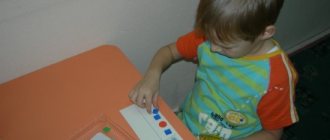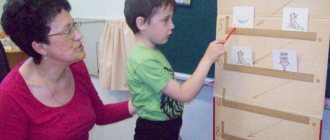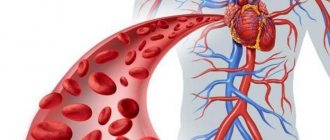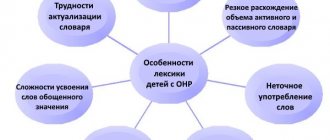Speech therapy is the science of speech disorders, methods of preventing, identifying and eliminating them through education and special training. Speech therapy studies the causes, mechanisms, symptoms, course, structure of speech disorders and the system of corrective influence.
At the Yusupov Hospital, speech therapists restore impaired speech functions using innovative techniques.
Principles and visual methods of speech therapy
When to contact a speech therapist? Adults need speech therapy rehabilitation after a stroke, traumatic brain injury, or brain tumors. Children need consultation with a speech therapist in the following cases:
- a child of one and a half to two years old does not pronounce the words “mom”, “dad”, “top-top”;
- the baby is silent until the age of three, although he understands speech addressed to him;
- the child is lagging behind in speech development;
- after traumatic brain injury;
- By the age of five, a child nasals, burrs, lisps, and pronounces sounds incorrectly;
- baby at five, the child doesn’t remember words well.
From the age of three, children are recommended to undergo an annual consultation with a speech therapist, even if their parents think that everything is fine. Intensive development of the cerebral cortex in children continues until the age of 6-7 years. It is better to deal with speech therapy problems before school, and it is worth starting early.
What is the difference between a speech therapist and a speech pathologist? A defectologist has a specialization in “defectology”. He works with children with physical and mental disabilities. A speech therapist works with children without mental retardation or disruption of the central nervous system. He teaches the correct pronunciation of sounds and syllables. The tasks of a speech therapist at school are the correction and prevention of reading and writing disorders.
Speech therapy is based on the following basic principles:
- consistency;
- complexity;
- development principle;
- consideration of speech disorders in relation to other aspects of the child’s mental development;
- the principle of taking into account the causes and mechanisms of speech defects.
Speech therapy methods are conventionally divided into several groups:
- organizational – comparative, longitudinal (study over time), complex;
- empirical – observation, experimental, psychodiagnostic (tests, questionnaires, interviews), biographical (collection and analysis of the patient’s life history);
- quantitative and qualitative analysis of the obtained data, their machine processing using electronic computers and computer programs;
- interpretative – methods of theoretical study of connections between the phenomena being studied.
Technical means that ensure the objectivity of the study are widely used: intonographs, nasometers, spectrographs, video speech, phonographs, spirometers and other modern equipment. X-ray film photography, cinematography, electromyography, glottography make it possible to study the dynamics of holistic speech activity and its individual components. Neurological problems are also studied in speech therapy.
History of the method
The founder of the Tomatis method was otolaryngologist (ENT), surgeon, and phoniatrist Alfred Tomatis. As the son of an opera singer, he spent a lot of time in the opera house as a child, which sparked his interest in the process of listening. Already working as a doctor with opera singers and artists, he did various studies on the connection between the ear and human abilities, which formed the basis of the method.
Gradually, the method was improved, the scope of application expanded more and more from singing to oratory, then to learning foreign languages, helping schoolchildren improve their academic performance, and then to working with special children, for example, with autism, sensorimotor problems. Technical progress also did not stand still, and gradually the Tomatis device turned from a huge sound conversion machine into a small digital tablet Talks up®.
In 2000, Alfred Tomatis transferred all the assets of his Method to his son Christian, who founded the company TOMATIS DEVELOPPEMENT SA. It is currently the exclusive owner of the Tomatis® Method. Now the company employs the grandchildren of the inventor of the Tomatis Method - Grégoire Tomatis, director and administrator, and Sophie Tomatis, clinical psychologist and lawyer.
Classification of general speech underdevelopment in speech therapy
In terms of clinical composition, the category of children with general speech underdevelopment is heterogeneous. Speech therapists distinguish the following forms of pathology:
- uncomplicated forms of general speech underdevelopment in children with minimal disorders of brain function - insufficient regulation of muscle tone, immaturity of the emotional-volitional sphere, motor differentiation);
- complicated forms of OHP in children with psychopathic and neurological syndromes - cerebrasthenic, convulsive, hypertensive-hydrocephalic, hyperdynamic;
- gross underdevelopment of speech in children with organic lesions of the speech parts of the brain (with motor alalia - the absence or underdevelopment of speech in children with normal hearing and initially intact intelligence).
The following classification of speech disorders in speech therapy is currently used:
- the first level of speech development is “speechless children” who lack common speech;
- the second level of speech development - the initial elements of common speech, a poor vocabulary, and the phenomena of agrammatism are determined - speech disorders manifested in difficulties in generating or perceiving sentences;
- the third level of speech development is the appearance of expanded phrasal speech with underdevelopment of its semantic and sound aspects;
- the fourth level of speech development – residual gaps in the development of the lexical-grammatical and phonetic-phonemic aspects of speech.
Work principles
The method is based on the connection of the middle and inner ear with the brain and nervous system. Tomatis specialists say that “The ear is the door to access the entire nervous system.” By sending sound waves with various parameters to the ear, and through it to the brain, a specialist can purposefully influence certain functions of the human psyche, for example, relieve excessive anxiety, improve sleep, reduce excitability or, conversely, increase concentration, increase energy, increase abilities to communication.
From the outside it may seem that a person is “just listening to music.” But in fact, each music track is processed in a special way using special Tomatis filters. Each musical composition contains its own unique settings, which the Tomatis therapy specialist selects individually for each client, depending on the tasks set at the beginning of the work. And in each case, the effect will be slightly different, depending on the person, his characteristics, age and other circumstances.
When selecting a Tomatis program, the specialist proceeds from three zones of influence:
- “Vestibular zone” - this includes functions such as: balance, coordination, sense of rhythm, gross and fine motor skills (including speech), sense of one’s body, sense of balance, emotional regulation, memory and attention, ability to socialize, forecasting, counting perception. This zone “turns on” at low frequencies, which is provided for in the corresponding programs.
- Communication and Speech Area - Affects language, speech, phonemic awareness, speech recognition, verbal memory, ability to formulate thoughts, verbal communication skills, willingness to interact with others, learning, music analysis, and musical accuracy. The zone is active at frequencies of 500-4000 Hz.
- “Energy zone” - responsible for “brain awakening”, activation, attention, creativity, speech and music analysis operations, voice quality (timbre), energy for the first two zones. Operates at high frequencies, 2000-16000 Hz.
Each listening program affects all three zones, but the specialist places special emphasis on the “target zones” for a more intense impact. In addition to the frequency parameter, there are also a number of other parameters, which together give the world famous “Tomatis effect”.
Contraindications for Tomatis
The Tomatis method is not a treatment; the Tomatis system is a pedagogical method. Therefore, the only contraindication is deafness or severe hearing impairment. In case of cochlear implantation, it is carried out with restrictions. Epilepsy is also not a contraindication, however, parents should inform the specialist about this disease so that the appropriate type of program can be selected (Tomatis does not provoke an attack).
It is important to remember that sessions should be carried out in good health and in the absence of acute periods of any illness. During the client's illness, sessions are stopped and then resumed.
How does Tomatis therapy work?
Before the first course, you must undergo an initial consultation with a specialist. During the first meeting, clinical psychologist Olga Alexandrova gets acquainted with clients, collects anamnesis, conducts a TED test for parents (if the child will take Tomatis), and formulates tasks for the Tomatis course (this is necessary for choosing a specific program).
Next comes the Tomatis course itself: it contains 14 sessions of 40-80 minutes (depending on the age and characteristics of the client). During the session you can play, collect puzzles, do handicrafts, relax, design, draw, read and write, solve problems, and do homework. You can drink, but you can't eat. You can communicate (without removing your headphones). It is better if the parent sits in another room during the session (if this is not possible, then they are allowed to be present together). If a child falls asleep during a session, this means that the brain is working. This is a good effect. While the baby sleeps, Tomatis continues to work.
It is necessary to conduct 4-5 sessions per week so that the load is intense, but there is also rest. After the first course there is a break of 1 month. At this time, it is important to use the formed brain potential to enhance the effect: work with a speech therapist, speech pathologist, psychologist, teacher, or simply with parents at home (depending on the specific situation and goals of therapy). Exercises with the Forbrain device (from the Tomatis company) are especially recommended. This device is specially created to enhance the effect of the main Tomatis course. This device is also available in our center and is used by specialists in classes.
Next, the course must be repeated (before the second course, you need to analyze the results of the first; perhaps the specialist will again suggest taking the TED test to see the difference since the start of therapy). The second course involves new tasks, taking into account the results achieved in the first Tomatis program.
Next, Tomatis therapy can be completed or a third, and possibly a fourth course (in some cases up to 5 programs per year) may be prescribed. The decision to end or continue is made by parents together with a Tomatis specialist, based on the results achieved. During breaks, classes with specialized specialists, the use of Forbrain headphones, reading, and listening to music at home are also especially recommended.
Who performs Tomatis therapy?
Tomatis® carefully checks all specialists before accepting training. Therefore, only professionals can practice the method: psychologists, speech therapists, teachers and doctors with at least three years of experience (a list of all licensed specialists in the world can be found on their official website www.tomatis.com). After training, all Tomatis specialists remain in the professional community, where they regularly receive the latest information on new research in various countries, and also participate in professional webinars and conferences, improving their skills. In this way, Tomatis controls the quality of the work of its specialists.
In our center, the Tomatis method is used by the director of the center, clinical psychologist Olga Aleksandrovna Alexandrova, a licensed Tomatis practitioner. The international company Tomatis is the sole copyright holder of all trademarks and marks of Tomatis® and Talks up®. Our center uses only original Tomatis® equipment (unfortunately, in Russia there are many fakes and so-called “analogues”, which in fact are not Tomatis equipment). The modern (“real”) Tomatis device is a digital tablet (the so-called “electronic ear”) Talks up® and Tomatis headphones (they can be wired or wireless). The headphones are not simple, but with a special bone vibrator on the back of the head. That is, with the help of bone conduction, a separate signal also enters the ear (which is processed in a special way and affects the client’s brain). Certificate of obtaining a license to practice the use of Tomatis therapy for children, adolescents and adults (method of neurosensory stimulation using sound)





